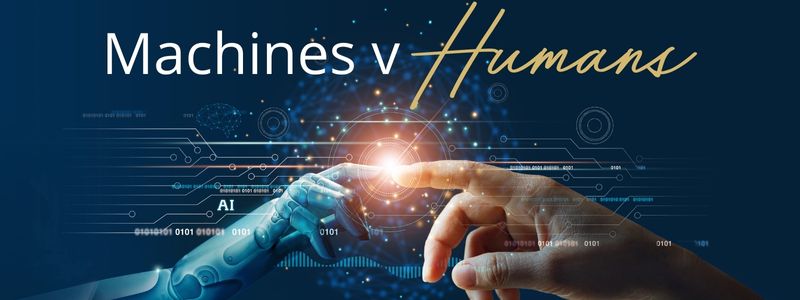Why AI is making PR professionals even more important
There’s a huge amount of hype around AI generated content and writing. New technology means what’s produced is now of a high quality, and that’s leading to a lot of buzz around the benefits of automating content creation for your business.
AI is being embraced by just about everyone, including the PR industry. In fact, some of this blog has been written using AI. The difference should be very easy to spot.
But while AI can write the words, it can never replace the personal, well-connected network of a good quality or highly experienced PR team, like the one at Adoni Media. We have spent decades working in the Australian media and in corporate boardrooms and will explain more on why this is so vital to successful PR later in this blog.

What is AI?
AI, or artificial intelligence, is the simulation of human intelligence in machines that are programmed to think and learn like humans. There are different types of AI, including:
- Reactive machines: These AI systems can only respond to current inputs and do not have the ability to learn or form memories.
- Limited memory: These AI systems can use past experiences to inform current decisions, but they cannot form general concepts from those experiences.
- Theory of mind: These AI systems can understand and respond to mental states such as beliefs, intents, and desires.
- Self-aware: These AI systems possess a sense of self and consciousness.
The most common AI applications today include natural language processing, image recognition, robotics, self-driving cars, and more.
It’s important to note that while AI technology is advancing rapidly, true AI that can think and learn like a human (AGI) is still in the realm of science fiction. Most of the AI technology we have today is designed to perform specific tasks and is not self-aware.
AI and PR
AI is transforming the field of public relations by automating tasks such as media monitoring, content creation, and social media management. This allows PR professionals to focus on more strategic and creative tasks, including building relationships with key stakeholders and crafting messaging.
Additionally, AI-powered tools can analyse data on media coverage and social media engagement to provide insights on the effectiveness of PR campaigns.
It’s important to note that AI is not a replacement for human PR professionals but rather a tool that can assist and enhance what they do.
Interesting, that even AI generated content, such as the paragraphs above, admit AI has its limitations.
The ‘human touch’ – media relations
The good news for PR professionals is that public relations still needs the ‘human touch’. You can’t run a PR campaign without knowing the journalists, producers, news directors, and chiefs of staff to contact, and the best way to tailor it to those specific media personnel.
Your personal network and strength of your media relations is often the key to securing media coverage for your clients.
And, as AI readily admits, it simply doesn’t do that which is why you need PR professionals who have worked in the media and know how to talk to newsrooms if you want to succeed in gaining media coverage.
The importance of media experience
Media experience is so important in PR. It’s why Adoni Media Founder and Managing Director, Leisa Goddard, has built a team of former foreign correspondents, political correspondents, news bosses, senior journalists and producers for A Current Affair, as well as former corporate affairs specialists.
“The power of knowing who to talk to, knowing the editors, and more importantly, knowing how to talk their language can not be underestimated,” Leisa said.
“Do you know what a grab is? What overlay means? What’s a voxpop? If you don’t, how are you going to explain to a television journalist what you’re providing from a PR perspective?”
Knowing journalism jargon
What do some of those terms mean?
GRABS
‘Grabs’ are short answers provided by interviewees which help a journalist tell a story. They’re usually about 10 seconds long and if you’ve been media trained, you’ll be taught how to deliver a ‘good grab’.
OVERLAY
If you hear a journalist or cameraman talk about overlay, or in the United States it’s B-Roll, they’re referring to pictures they need to cover the journalist’s script, the visuals that will be edited between the grabs.
VOXPOP
Voxpop comes from the Latin term ‘vox populi’, which means “voice of the people”. This is when people are interviewed at random in the street or at an event and are asked about their thoughts on a particular story or the event they’re attending.
Media training
These common media terms are some of the journalism jargon the Adoni Media team will teach you in media training.
We spend a lot of time in our training focusing, not just on presentation skills, but also on what you say and how you say it. We ensure you deliver your key messages in a media friendly way that television or radio journalists can use on air.
That comes from experience that can never be replaced by AI. It’s important to remember that AI can write the words but AI can’t deliver those words in person to the people who matter in the media. AI also doesn’t know how to connect with, or who to connect with, to ensure you gain the media results you need for your clients.
For more media and PR tips, techniques, and skills follow Adoni Media on Instagram, LinkedIn, Facebook, and Twitter.


